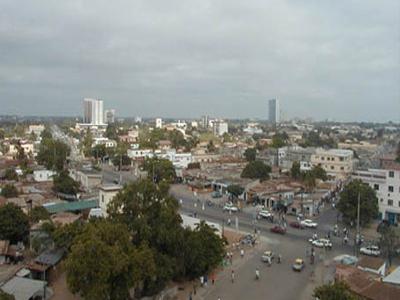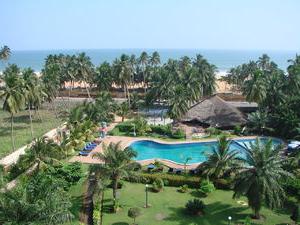Togo is a small state in West Africa, sandwiched between Ghana and Benin. The outlines of the country look like a rectangle stretched from north to south. Thus, 56 kilometers of coast is the entire access to the sea owned by the Republic of Togo. Lome, the country's main city, is located right on the shores of the Gulf of Guinea of the Atlantic, and its beaches are not least attractive to tourists. The climate of the southern part of the state is humid, equatorial. If savannas extend to the north, Lome lies surrounded by a tropical jungle.

The capital of Togo is a rather large city. It has about 900 thousand people. About its foundation, although it took place only at the end of the 18th century, only legends remained. A certain hunter, Braveheart, saw lush aloe thickets on the ocean among palm trees and built the first houses there. Later, the word "aloe" was transformed into "Lome". This settlement became the administrative center since 1879, when the country turned into a German colony, and continued to remain so after the First World War, when Togo passed into the hands of France. When the state gained independence and sovereignty in 1960, the village of Lome turned out to be the most developed economic center and received the status of the capital.
The railway, passing from the north to the coast, divides the city into western and eastern parts. The capital of Togo is concentrated in the west - embassies, houses of Europeans, administrative institutions of the state, and in the east - residential areas of the local population, a huge covered market, and most shops. In the north, there is a hospital and university with its campuses, and in the south there are hotels and beaches. Also in this part of the metropolis there are beautiful modern buildings where government meetings and conferences of various international organizations are held.

After the upheavals of the late 90s, the flow of tourists to the country somewhat decreased, but even now you can meet many foreigners, especially in the south, in the coastal part. The capital of Togo is rightfully proud of its beaches, but swimming in the local waters is suitable only for good swimmers, due to the strong ebb flow. Season lasts all year round. However, it must be borne in mind that the local beaches within the city limits are used by local residents as a toilet, so you should relax in isolated and equipped areas in the area of the Sarakawa Hotel. You can also go 9 kilometers east to Robinson Beach, where the rocks create a comfortable swimming area and reduce the recoil force of the wave.
The capital of Togo, Lome, knows how to surprise a tourist. The identity and characteristics of the local peoples who gave the world the Voodoo religion are most pronounced in the Marche des Fetishes (Fetishes Market), located on the western outskirts of the city. Here they sell exclusively objects of the voodoo cult: dried animal organs, ointments, rubbing, amulets and other "miraculous" things.
The Big Market in the very center is a three-story hive in which you can find everything that only the soul desires. But for batik, leather goods or figurines it is better to go to the "village of artisans", which is located near the Du Gulf hotel. There you can buy a souvenir first hand, and at the same time observe the work of craftsmen.
Having visited the cathedral and the Palace of the National Assembly, you can go to the town of Togoville, located on the lake. This is the unofficial capital of Togo, because here is the palace of the ruler of Mlapa IV. His Majesty himself serves as a guide. He will be happy to show foreign tourists his Mason Royal (Royal House), his gilded Mercedes, photographs of his ancestors and the throne. In return, the king expects a return gift from you.